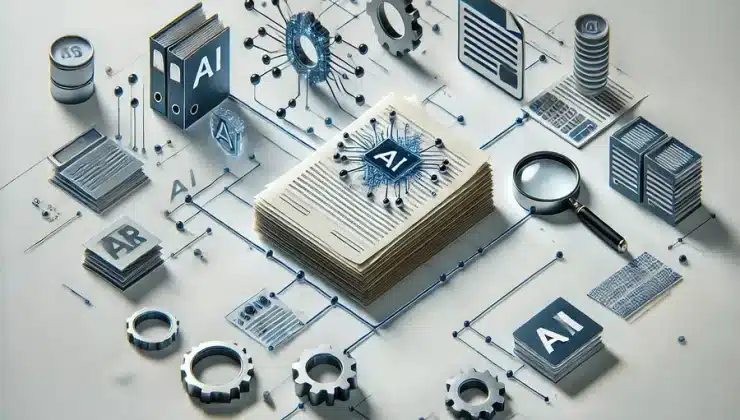How AI and Document OCR APIs Are Redefining Data Processing

Imagine a large mountain-like heap of papers on any one person’s table- bills, forms, contracts, or even notes. How exhausting just going through that would be, eh? Now imagine reading each sheet, keying in the details into a computer, and then verifying the data again to be sure there are no errors. That sounds boring and stressful.
This was the case for many years in various offices, banks, schools, and hospitals. But the change is happening today. Enter the new helpers: AI document automation and document OCR API. The two can read documents, comprehend content, and input data into a system all within a matter of seconds.
Less typing, fewer errors, and quicker than anything. Let’s get into the workings of this stuff, why it matters to you, and what this stuff does for me and you.
First, let us keep jargon at bay for just a while.
Sometimes technology sounds scary because of the big words. So let’s break it down:
- AI document automation: This simply means computers with artificial intelligence (AI) can now read documents and enter details automatically. For example, if there’s a bill, the AI can read the date, amount, and name, and save it without a person typing it out.
- Document OCR API: OCR means “Optical Character Recognition.” Think of it as a computer’s eye. It looks at a scanned paper or photo and reads the letters and numbers. An API (Application Programming Interface) is like a little bridge that connects this eye to other apps. So, a document OCR API is what allows one app to “see” and “read” papers for another app.
In short, OCR is the eye, AI is the brain, and the API is the hand that passes the message. Together, they turn papers into usable digital data.
Why Is This a Big Deal?
Data is everywhere. Banks need it. Schools need it. Hospitals need it. Businesses and governments need it too.
Earlier, people had to type every little detail. But this caused many problems:
- It was slow.
- It cost a lot of money.
- People got tired and made mistakes.
- Papers could get lost or damaged.
Now, AI document automation and document OCR API solve most of these problems.
Real-Life Examples You Can Relate To
Let’s imagine some simple situations:
Banks
You go to a bank with a loan form. Earlier, someone at the counter would type all your details into a computer. Now, the bank’s system uses a document OCR API. It scans your form and saves everything instantly. That means you get faster service and fewer errors.
Hospitals
Doctors write messy notes or prescriptions. With AI document automation, even tricky handwriting can be understood and stored in the system. This makes sure your records are safe and ready whenever you visit.
Schools
Think about hundreds of admission forms. Instead of teachers entering every student’s details, the system can scan the forms and update records within seconds. Teachers get more time for students instead of paperwork.
Businesses
Companies get invoices and bills, and contracts every day. Instead of wasting precious time typing this information, the system should just scan it and store it automatically. This saves costs and avoids errors.
Government Offices
From voter IDs to ration cards, the government handles massive amounts of forms. With document OCR APIs, they can process things faster. Citizens get services without long waiting times.
Why Everyone Wins
So what do these tools really give us?
- Speed – What took hours can now be done in seconds.
- Accuracy – Machines don’t get tired or distracted.
- Money saved – Less need for people to do boring typing jobs.
- Easy to find – Digital records are simple to search.
- Safe – Data can be locked with passwords and security systems.
- Scalable – No matter how big the pile of papers, the system can handle it.
Is It Perfect Yet?
Not fully. Sometimes:
- A bad scan or torn paper confuses the system.
- Very messy handwriting is still hard to read.
- Small businesses may find the first setup expensive.
But AI is like a student who learns fast. The more it works, the smarter it becomes. Accuracy keeps getting better.
How Does This Affect You?
This is not only about banks or big companies. It touches all of us:
- Your loan gets approved faster.
- Your hospital visit is smoother.
- Your exam results are ready quickly.
- Your government application is processed sooner.
In short, your life gets easier.
What’s Next in the Future?
We are only at the start of this journey. Soon, we can expect:
- OCR that reads many languages perfectly.
- AI that can even read very messy handwriting.
- Systems that combine OCR with voice, so you can talk and scan at the same time.
- Apps where OCR and AI are built into your phone, making daily work super simple.
A Greener and Smarter World
Another benefit is for nature. If more documents go digital, we will need less paper. Fewer trees will be cut, which means a greener planet.
It saves time for people. They can now invest hours once spent keying boring data in solving real problems, visualising work, and helping others. Machines think for the boring part; humans think for the creative part.
Final Words
The faster the world moves, the faster data moves at its centre. AI document automation and document OCR API are changing how we handle information.
Not only does it save time and money, but it also provides for smoother services; fewer errors; a decrease in daily-life stressors, among others. From banks to hospitals to schools to government offices, technology is working quietly behind the scenes for us.
Next time you see your medical report arrive quickly or your bank form updated instantly, remember—AI and OCR are doing the hard work for you.
Papers are no longer a headache. Data is alive, digital, and ready to help us.
And that’s how AI and document OCR APIs are truly redefining data processing.






